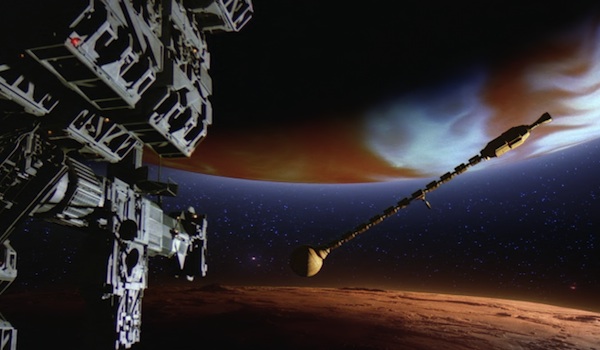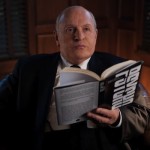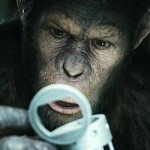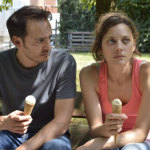2010: The Year We Make Contact Review
It was with great trepidation that I sat down to watch “2010: The Year We Make Contact.†It’s the sequel to my all-time favorite film, 2001: A Space Odyssey, but it’s generally regarded as a massive step back in quality from its predecessor. The argument essentially boils down to director Peter Hyams not being able to maintain the genius pacing, tone, and sense of wonder that made “2001†so special. He doesn’t; it’s hard to top Kubrick. But the fact that it’s not at all the same kind of movie doesn’t mean it’s not a good one. “2010†is a more straightforward sci-fi film. It uses the ideas created in “2001†as a starting point. But just because it’s not as original as Kubrick’s film, doesn’t mean it’s not thoroughly entertaining.
Nine years after the events of the first film, Dr. Heywood Floyd (Roy Scheider, stepping in for William Sylvester, who was deemed too old for the role) has is approached by a Russian space delegate who makes him a proposition. Both the Soviets and Americans are attempting to make it out to Jupiter to find out what happened to the Discovery and why the HAL-9000 computer (voice of Douglas Rain) malfunctioned. The Soviets are much closer to being prepared for the actual journey, but they don’t possess the same knowledge of the case as the Americans. After some political maneuvering, it is agreed that Floyd, Dr. Walter Curnow (John Lithgow) and Dr. R. Chandra (Bob Balaban) will join the crew of the Something (which includes the Helen Mirren) for a joint mission. Their goal: reactivate HAL and try to find out what happened to Dave Bowman (Keir Dullea). But things are tricky. Tensions between the two nations at home keep the members of the crew on edge the entire time. And the specter of Dave keeps warning the crew to leave, for “something wonderful†is about to happen.
I hate to make comparisons between the two movies. I think comparisons are the reason “2010†has received so much hate. But comparing a sequel and its prequel are inevitable and somewhat necessary. While the story borrows only a little from the first film, it still borrows some, and that inextricably links these two films.
The biggest difference between the two films is the emphasis on characters in “2010.†The lead character of “2001†was arguably HAL (maybe Dave), but neither dominates the film’s focus or its running time. Here, Dr. Floyd is undoubtedly our main character, and Roy Scheider’s performance makes us care about him.
The other two major characters who demand our attention are HAL and Dave. HAL is given a chance at redemption. The explanation for why he malfunctioned was a bit half-baked (I think “2001†is best left open-ended), but it’s still a bit heartbreaking when he asks his creator (Dr. Chandra) if he will dream. Dave becomes a chilling presence in the film. It’s almost as if he steps into HAL’s role (although he’s not trying to harm anyone). He’s just really creepy. The music in the few scenes during which he appears is downright frightening.
The best part about “2010†is the climactic event–the “something wonderful.” Without getting too much into it, it is awe-inspiring. It doesn’t really explain anything, but that’s OK. Seeing something like this take place on screen is just downright haunting. And for something filmed in the 1980s, the special effects are great.
The film also serves as a Cold War cautionary tale. The message is heavy-handed, no doubt. But the setting and the stakes are appropriate, and I thought the interaction between the crew was actually quite interesting (especially the uneasy friendships that formed).
I can see why people would think this film unworthy, but if it’s not shackled by the expectations of its predecessor, it works as an exciting sci-fi mystery tale. It’s conventional, but it features some touches that are memorable. I enjoyed it quite a bit, and I decided to give it a chance.
















